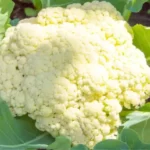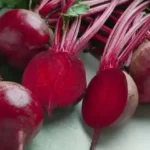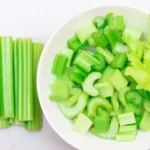If you’re a home gardener looking for the greatest companion plants for peas, you can achieve your goal with the age-old gardening practice called companion planting. In this article, we will discuss the many advantages companion planting offers and how it can help your pea plants grow strong and produce more season after season. Then, I’ll give you a handy list of plants perfect for planting alongside your peas, so your garden can be healthy, productive, and cater to growing your best pea crop.
Several of the most common pea companion plants are carrots, turnips, radishes, cucumbers, corn, beans, and potatoes. It’s also just as important to know what not to plant near your prized pea plants, so avoid planting onions, leaks, garlic, chives, and shallots.
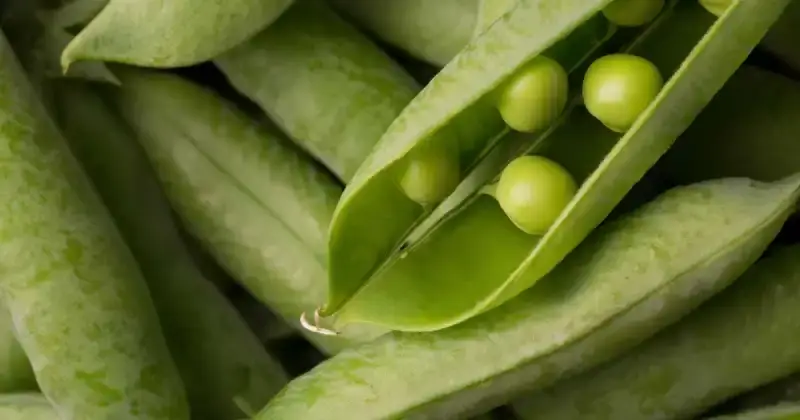
If you’ve heard of companion planting and want to understand how you can use this ancient practice to your benefit, you’ve come to the right spot. We’ll cover how to get your pea plants up and running in less time and with a lot less hassle.
I’ll also discuss what plants to avoid planting near your peas so you’ll never again need to worry if you’re missing out on providing your peas with the best environment in which they can flourish.
Humble Highlights
- Save time by precisely knowing what companion plants help improve soil fertility and keep your garden healthy so you can ward off unwanted insects while enjoying the best-tasting peas ever!
- Discover these 10 most common benefits of companion planting so you can let Mother Nature work on your behalf.
- Boost your pea production by learning the one vegetable family you should never grow near your pea crop to help ensure that they never run out of necessary soil nutrients.
What Is Companion Planting
Companion planting is a traditional gardening practice that improves soil health, safety, and nutrition for delicate vegetable plants. This age-old technique involves planting certain crops near each other to repel pests, attract beneficial insects and pollinators like bees, and encourage growth and increased yields in your garden.
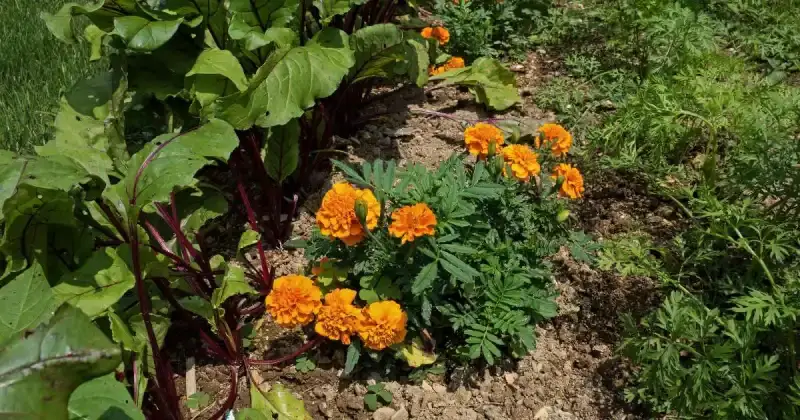
Let’s explore the components of companion planting a bit closer.
First, companion planting refers to growing plants together in the same garden bed or within the same area that mutually benefits each other. For example, this practice may include planting vegetables, herbs, and flowers within the same garden bed or intercropping them in a field.
Second, some companion plants may shade more delicate, sun-sensitive varieties. In contrast, others may attract helpful insects or enhance your garden’s overall health by increasing the density of necessary soil nutrients. These helpful neighbors are considered “companion plants” as they support and assist each other throughout the growing cycle. 1
Third, some garden plants may require less of a particular soil nutrient, while another adjacent plant may need this same valuable nutrient in abundance. Such scenarios help reduce plant competition and create a prosperous environment where every plant can get its rightful share.
Therefore, it’s essential to carefully choose plants that work well together and evaluate the unique role each one plays in promoting the growth and productivity of your entire garden.
What Are The Benefits Of Companion Planting
Some of the best advantages of companion planting include:
- Boosts plant growth
- Enhances flavor
- Repels harmful insects while attracting beneficial ones
- Provides better soil health
- Effective and practical use of garden space
- Helps lessen the chances of certain plant diseases
- Crowds out weeds
- Offers natural protection from wind and shade
- Retains moisture within the soil
- It helps to prevent soil erosion
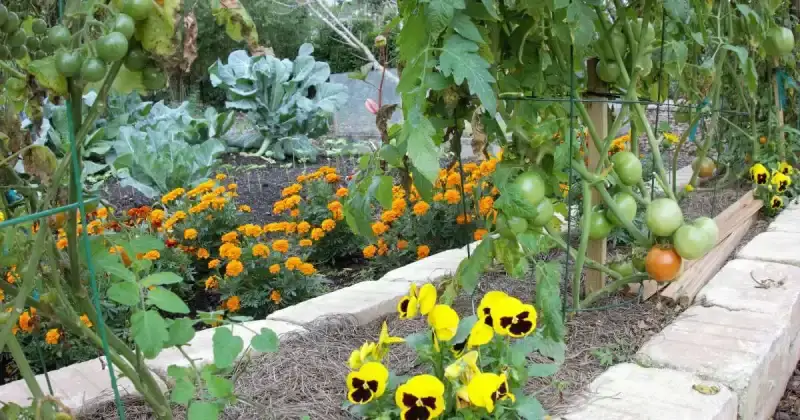
Let’s take a closer look at some of these fantastic companion benefits.
Nature’s Support System
Plants and flowers that grow tall and strong will lend themselves as natural, organic supports for their lower-growing counterparts.
Take, for example, the humble sunflower. Planting tall sunflowers next to cucumbers or snap peas allows the shorter, growing plants to use the sunflowers as a natural trellis, or framework that supports climbing plants. This interdependent relationship provides the low-growing plants with much-needed support while helping keep the taller plants upright, making them less likely to fall over.
Complementary Nutrient Needs From The Soil
In companion planting, the different plants create a cooperative relationship where each plant benefits from the other. Growing plants with complementary nutrient needs can efficiently use resources within your garden soil and help balance your garden’s ecosystem.
For example, one plant may extract certain nutrients from the ground that others cannot. In turn, the second plant provides shade or other benefits, like shelter from the wind, leading to both plants growing healthier and more vigorously than they would alone. 2
Nitrogen Fixation
All organisms require nitrogen, but plants cannot absorb it directly from the air. Therefore, nitrogen fixation, a process where nitrogen-fixing organisms (bacteria) convert atmospheric nitrogen into a form that plants can use effectively, is necessary.
Nitrogen fixation is the term for plants such as peas, beans, and clover that can fix or excrete atmospheric nitrogen for their use and for the use of any close neighboring plants because of its relationship with the bacteria in the ground.
This process makes nitrogen more readily available for neighboring plants that readily need it, helping to improve your garden’s overall health and productivity.
Sheltering Soil With Microclimates
Growing mutually beneficial plants together helps protect soil from the adverse effects of heavy rainfall and intense sunlight. This method allows plants to provide welcome shade for each other, reducing soil erosion and water loss. You can create a microclimate that helps shield the soil from excessive rain and sun by planting taller and bushier plants alongside shorter, more delicate ones.
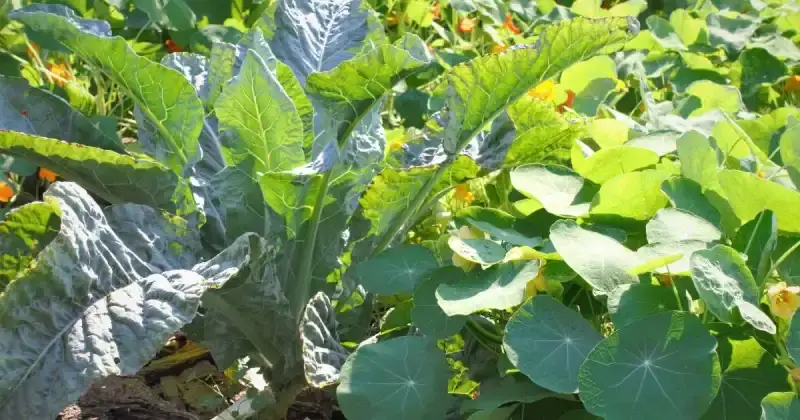
For example, planting taller plants such as corn or sunflowers alongside shorter ones like lettuce or spinach can provide shade and shelter for these shorter plants, helping to protect them from the harsh sun and heavy rain. This method also helps prevent soil erosion caused by heavy rains if your region is prone to downpours.
Natural Weed Repellent Using Living Mulch
One of the critical benefits of companion planting is the ability to create a thick cover across the majority of open land or within your garden bed. This thick cover, sometimes called “living mulch,” can help prevent weeds from taking over and stealing nutrients, light, and sun from your vegetable plants.
You can create a layered effect in your garden that covers the ground and shades out any potential weeds by alternating upright plants, such as tomatoes or corn, with sprawling plants, like cucumbers or melons. Taking a little time and planning your garden this way can be a highly effective way to help control weeds without using chemicals or other harmful methods.
Here’s a great video resource I found that goes into detail about how any grower, beginner or seasoned pro, can use companion planting within their garden to boost plant production, health, and fertility.
Water Saver
Companion planting can conserve water by reducing evaporation and keeping the soil moist. This is especially true during hot and dry weather or if you live in an arid climate. Retaining moisture in the soil saves you both time and resources by reducing the need for frequent watering.
Companion planting can also improve the soil’s ability to retain water, providing plants with the nourishment they need to stay hydrated. In addition, when you keep your garden soil moist, you give a reason for earthworms and other beneficial soil microorganisms to stick around in your garden. These helpful microorganisms help keep your soil nutrient-dense and improve the overall health of your garden.
Pest Control: Keeping Bugs At Bay
One of the best ways to combat pests is through companion planting. Many companion plants, such as marigold flowers, catnip, and rue, have strong odors or chemical compounds that repel specific pests and can be planted near certain crops to help keep them pest-free.
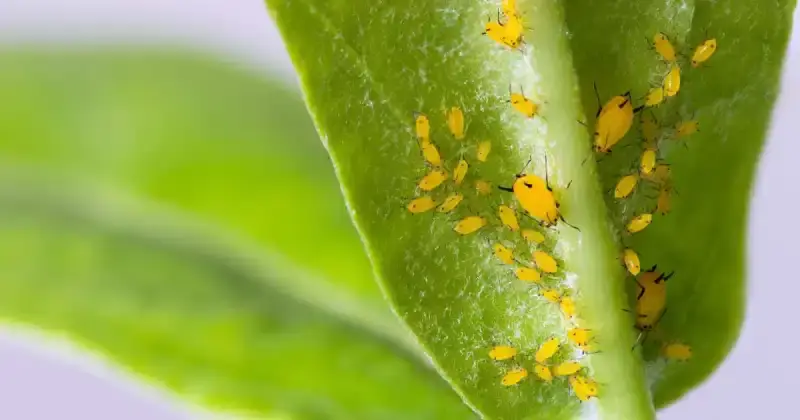
For example, planting marigolds near tomatoes can help repel tomato hornworms, and planting catnip near cabbage can create a natural barrier that helps repel aphids. By planting helpful companions in the garden, you reduce the damage caused by pests while making the garden a healthier and more sustainable environment. 3
Companion planting also helps create a garden environment that attracts beneficial insects.
Ladybugs, lacewings, and praying mantids are all insects that will help lessen the destruction caused by aphids, squash vine borers, and cabbage loopers. Likewise, luring butterflies, bees, and moths into your growing space helps to pollinate your garden’s flowers.
Lastly, remember the birds. Birds provide an excellent natural defense against unwanted pests. Nearly 95% of all bird species feed their young with insects. By keeping a bird feeder close to your garden year-round, you’ll encourage your winged friends to stick around for a quick snack and protect your plants.
Faster Growth And Flavorful Harvest
Many seasoned gardeners believe that companion planting enhances the overall taste of their fruits, vegetables, and herbs. This reasoning can be attributed to various causes, such as providing plants with the proper nutrients, space, and protection. In addition, when plants are grown in optimal conditions, they produce larger and more flavorful fruits and vegetables.
This process can also affect the flavor of neighboring plants by adding subtle flavors to the soil. A good example is basil, which can enhance the flavor of tomatoes when grown beside it in the garden due to changes within the soil chemistry.
How Do Peas Benefit From Companion Planting
Companion planting with peas can include planting carrots, turnips, radishes, cucumbers, corn, beans, and potatoes, as well as aromatic herbs such as parsley, mint, chamomile, and dill. Additionally, these herbs can help repel pests and entice beneficial insects while adding a unique flavor to your peas and other vegetables in the garden.
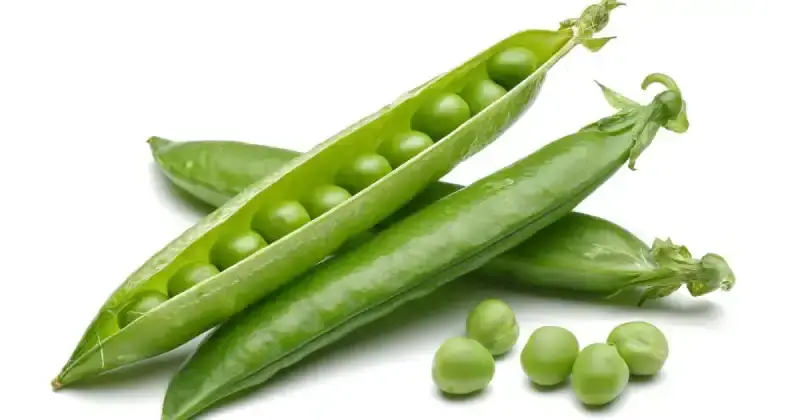
Now, let’s review some specific companions alongside the pea patch in your garden.
What to Plant with Peas
There are several helpful companion plants that you should consider growing with your peas, including:
- Brassica Family (radish, mustard greens, turnips)
- Nightshade Family (eggplant, peppers, potatoes)
- Amaranth Family (spinach)
- Daisy Family (lettuce)
- Marigolds
- Carrot Or Parsley Family (cilantro)
- Pea family (green beans, hairy vetch)
- Grass family (corn)
- Cucumber family (cucumber)
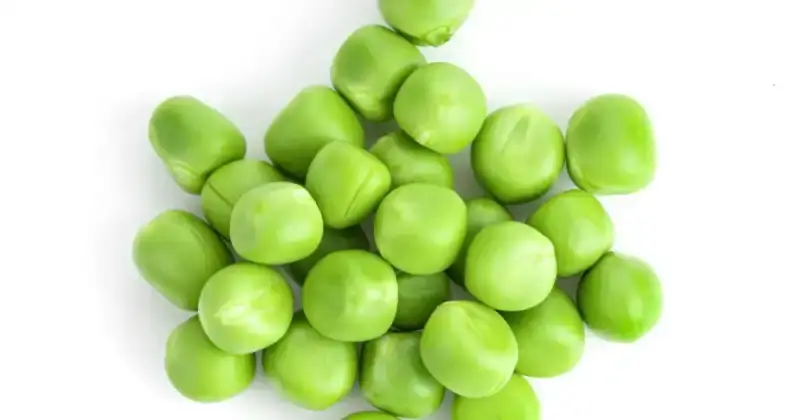
Let’s delve into each of these friendly neighborly companions in a bit more depth so you can begin to plan your garden setup.
Brassica Family (radish, mustard greens, turnips)
When peas are sowed with plants from the Brassicaceae family, such as radishes, mustard greens, and turnips, one of the best benefits they can receive is improved soil structure. These plants can help loosen the soil, break up hardpan, a compacted layer of earth that restricts root systems, and improve drainage and aeration, helping your peas’ growth tremendously.
When planting radishes with peas, the peas will climb up the radishes, providing shade for the radish roots, protecting them from the sun, and preventing them from drying out. Additionally, radishes are nitrogen-fixing plants. They will improve soil structure and increase nitrogen availability for your peas, promoting healthy and productive growth.
Check Lowest Prices On The Best Radish Seeds
Turnips and peas make great companion plants and efficiently use garden space. Turnips grow underground, while peas above ground, allowing both plants to thrive in the exact location without competing for space.
Here’s a fantastic video resource I found that discusses the entire process of growing plump and delicious peas, including the best companion plants for an excellent pea harvest.
Solanaceae, Nightshade Family (eggplant, peppers, potatoes)
Eggplant, peppers, and potatoes are all nightshade family members and make great companion plants for peas.
Eggplant emits an odor that repels many garden pests, such as aphids, whiteflies, and spider mites. This aroma can help protect peas from these damaging pests, allowing them to grow stronger and produce more. 4

Peppers are also known for repelling aphids and spider mites, which are common pests that damage pea plants. Peppers can also help improve the garden’s overall health by attracting beneficial insects, such as ladybugs and bees, which can help pollinate your garden.
Check Lowest Prices On The Best Pepper Seeds
Potatoes can help improve soil structure by loosening the soil, benefiting the relatively shallow pea roots. Potatoes also can fix nitrogen from the air, which helps improve the soil structure and increase nitrogen availability for the peas.
When growing potatoes in your garden, you can also help reduce chemical fertilizers, which is an excellent habit to get into when growing your grub. There are three main methods for reducing these chemicals and creating a sustainable vegetable oasis at home:
1. Planting perennial vegetables
2. Using and rotating cover crops
3. Healthy grazing practices for livestock (if you have them)
These three practices actively build carbon in your soil, improving soil quality and plant fertility.
Amaranthaceae, Amaranth Family (spinach)
One of the key benefits of pairing spinach with peas is that it can provide welcome ground cover. The spinach leaves cover the ground, helping to keep the soil moist and cool, which peas enjoy.
Another benefit of growing spinach is that it is an excellent space saver in the garden. Spinach is a low-growing plant, meaning it won’t compete with your climbing peas for sunlight or space. Instead, spinach grows close to the ground, providing adequate ground cover for peas. This companion plant setup can make the most efficient use of the garden space, allowing your peas to grow taller and stronger without feeling overcrowded by other plants. 5
Check Lowest Prices On The Best Spinach And Leafy Green Seeds
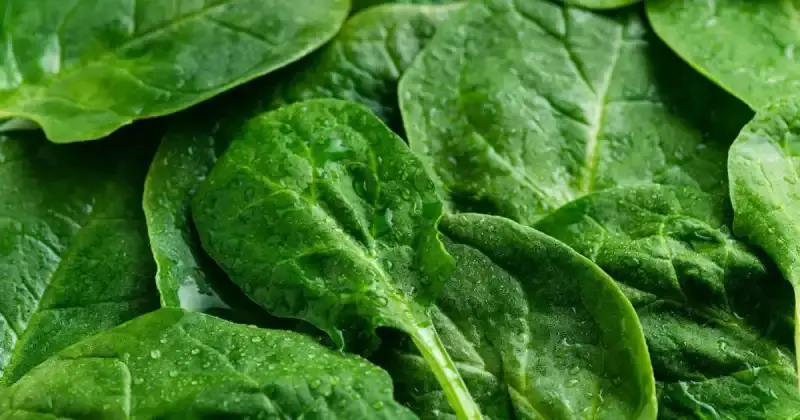
Asteraceae, Daisy Family (lettuce)
The humble lettuce is a close companion for peas and can provide several good benefits, such as providing ground cover, maintaining adequate soil moisture, and providing competition for weeds. Additionally, lettuce adds organic matter back into the soil which promotes great soil fertility.
And, if you live in a cooler climate, you may be able to grow lettuce throughout both the spring and fall growing seasons, which are also the best times to grow your peas. This companionship between lettuce and peas allows more efficient use of space and maximizes yields for every square meter of growing area in your garden.
Marigolds
Marigolds make excellent companion plants for peas. Marigolds add a welcome splash of color to your garden and have additional benefits that will serve your pea patch well.

For example, the compounds marigolds release, especially limonene, help keep troublesome insects away, especially the tomato-hungry whitefly. Likewise, the strong scent of these powerful flowers can repel animals like deer and rabbits from stealing a midnight snack. And let’s remember how marigolds slow down the ever-present mosquitoes. Fortunately, these little but mighty powerhouses make an excellent investment, are super inexpensive, and are a great helper in the garden. 6
Check Lowest Prices On The Best Marigold Seeds
Apiaceae, Carrot Or Parsley Family (cilantro)
As a cool-season, nitrogen-loving plant, cilantro prefers soil that retains moisture and is rich in nutrients, which are also the same conditions enjoyed by peas. Cilantro can also enhance the flavor of your peas, making them taste even more delicious than they already are.
Peas can help cilantro grow strong and healthy by fixing nitrogen in the soil. As mentioned above, peas fix nitrogen from the air and add it to the ground through their roots, making it available for cilantro and other plants to absorb.
Lastly, companion planting cilantro with peas may increase overall productivity. Growing these friendly neighbors together allows for efficient use of garden space. In addition, you can harvest cilantro throughout the growing season while your peas are still maturing.
Check Lowest Prices On The Best Cilantro Seeds
Carrots
Carrots make an excellent companion plant for peas because they have similar growing preferences and can provide various benefits. Both carrots and peas are cool-season vegetables that enjoy moist, well-drained soil and have an equal maturity time of around 70 to 80 days. And because peas are nitrogen-fixing plants, they help improve the soil fertility for your nitrogen-loving carrots.
Placing these two friendly neighbors together can allow for efficient use of garden space, improved soil conditions, and better yields. Additionally, the carrot’s taproot system can help break up the soil, improving drainage and aeration, and benefiting the shallow-rooted peas.
Check Lowest Prices On The Best Carrot Seeds
Leguminosae, Pea Family (green beans)
Companion planting green beans with peas can significantly improve your garden’s overall health and productivity. One of the key benefits of this plant combination is that it can help to improve soil fertility. Like other legumes, green beans can fix nitrogen from the air and add it to the soil through their roots. This process can help increase nitrogen availability for the peas, which, in turn, helps them throughout their lifecycle.
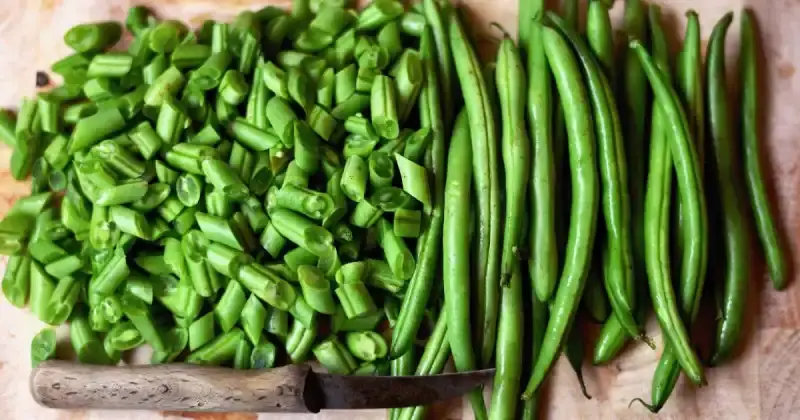
Additionally, companion planting green beans and peas can help to maximize the use of space in the garden. Peas have tendrils that latch onto poles, cages, trellises, and even other plants. Green beans can be trained to climb up these same support structures, which helps increase the yield per square meter.
Check Lowest Prices On The Best Green Bean Seeds
Use green beans as a good shade barrier to keep your garden soil cool and moist. Because green bean plants have large leaves, the plants help reduce soil evaporation which is very beneficial for your peas. As a bonus, with all of this extra shade, you should also see fewer weeds.
Fabaceae, Pea Family (hairy vetch)
One of the critical benefits of hairy vetch, a fantastic cover crop, is that it provides shelter and food for beneficial insects, such as ladybugs, bees, and butterflies. These insects pollinate your plants and flowers, create a more diverse and natural ecosystem, and help control destructive pests such as aphids and spider mites.
Hairy vetch, along with other cover crops help prevent runoff and erosion while adding organic matter and essential nutrients to your garden’s soil. This improves the growing conditions for your peas and helps them become more productive during their lifecycle.
Check Lowest Prices On The Best Cover Crop Seeds

Poaceae, Grass Family (corn)
Corn and peas make terrific companion plants. As discussed above, peas help restore nitrogen to the soil, which corn is happy to absorb, improving soil structure and fertility in your garden.
Additionally, sweet corn can also provide shade for the peas. Aside from helping keep the soil moist and a bit cooler, the added height of corn can help protect your peas from getting too much direct sun.
When planting tall vegetables, like rows of corn, you can either plant them in a north-south or east-west direction. There is debate among growers as to which is better, but this comes down to your growth goals and the needs of the individual plants.
When growing in rows, planting corn and other tall vegetables on the north side of your garden allows sunlight to infiltrate deeper into the canopy your crops create than an east-west orientation. However, crops planted in east-west configuration helps shade and crowd out pesky weeds more significantly.
My recommendation is to try a north-south planting the first year and an east-west planting the following year. Note the differences, see what works best, and then stick to the one most advantageous to your growing habits. 7
Cucurbitaceae, Cucumber Family (cucumbers)
Cucumbers and peas make great friends in the garden. They can be planted together in the same garden bed and complement each other in several ways.
First, peas are legumes and, therefore, nitrogen-fixing plants. They fix nitrogen from the air and store it in their roots, which can help improve the soil structure and increase nitrogen availability for cucumbers.
Second, growing peas and cucumbers together can also deter pests. For example, peas can repel aphids, a common problem of cucumbers. In addition, peas emit a strong scent that can mask the scent of cucumbers, making it harder for pests to locate them.

Cucumber beetles are also known to feed heavily on pea plants. Therefore, planting peas nearby helps confuse these dangerous beetles reducing their damage.
The flowers of both peas and cucumbers also help attract beneficial insects into your garden, like butterflies and bees. These welcome pollinators can help boost plant production, resulting in higher yields.
Conversely, cucumbers provide shade to your pea plants and help keep the soil cool and moist. In addition, cucumbers help protect pea seedlings from getting too much sun and wind, allowing them to establish and root better in your soil.
Check Lowest Prices On The Best Cucumber Seeds
Plants To Avoid Growing Near Peas
One of the best things you can do to help your pea plants thrive is to know what not to plant within their vicinity. For this reason, you’ll want to avoid growing onions, garlic, chives, leeks, and shallots near your pea crop.
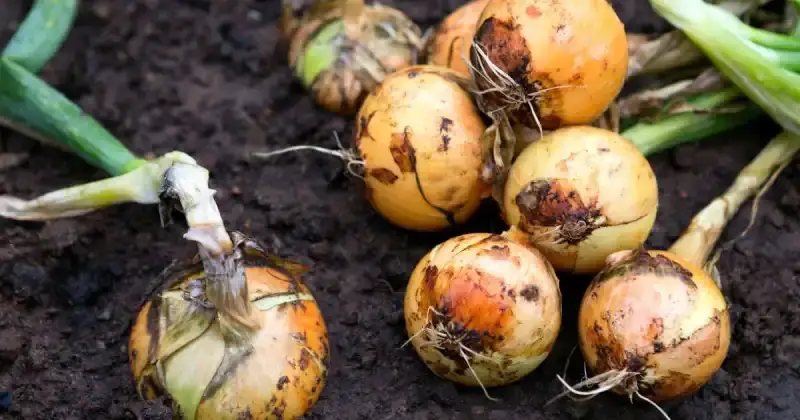
Let’s take a closer look at why these plants are no-no’s around peas.
Allium Family
The word allium literally means garlic in Latin. Generally, onions, garlic, chives, leeks, and shallots are allium plants that will interfere with the growth of your pea plants. When growing garlic for example, sulfur will accumulate in the soil. This injection of sulfur stunts the growth of your mighty pea plants.
Likewise, garlic and shallots feed excessively on soil nutrients that peas enjoy, making these plants competitors in the garden and horrible pea companions. Onions aren’t a good option around peas either since they leach nutrients from the soil, like nitrogen. And leeks attract harmful pests, like leek moths, ants, and aphids, that will also size up your tempting peas and eventually damage or kill your plants. 8
If you decide to grow anything from the Allium family, locate these plants on the other side of your garden or grow them in containers you can easily position away from your pea patch. Then, you’ll be able to enjoy each without the interference and hassle they may cause.
Conclusion
Companion planting is a valuable gardening technique that enhances the health and productivity of your garden and the flourishing plants that call it home. By strategically planting complementary or mutually beneficial plants near your peas, you can take advantage of the various benefits each has to offer.
Some good companion plants for peas include carrots, turnips, radishes, cucumbers, corn, beans, lettuce, marigolds, and potatoes. However, you’ll want to avoid planting anything in the Allium family, like onions, shallots, garlic, chives, and leeks, as they will stunt the growth of your pea plants.
By carefully selecting and planting companion crops, you can create a healthy and productive garden well-suited to your peas. Remember, you can place companion plants within the same growing bed as your pea patch or grow your companions in pots and place them around your peas as you see fit.
What friendly companion plants have you grown around your peas to make them more productive? Let me know by meeting me in the comments below!
SOURCES
- Department Of Primary Industries And Regional Development, Agriculture And Food – East-West Orientation For Improved Crop Competition
- Utah State University, Extension – Soil And Fertility
- Almanac – Beneficial Insects In The Garden
- University Of Minnesota, Extension – Growing Peas In Home Gardens
- University Of California, Agriculture And Natural Resources – Garden And Landscape Plantings On Hardpan Soils
- Science Daily – How The Humble Marigold Outsmarts A Devastating Tomato Pest
- Nola.com – Vegetable Rows: North To South Or East To West?
- ATTRA Sustainable Agriculture – Toolkit: How To Reduce Synthetic Fertilizer Use

